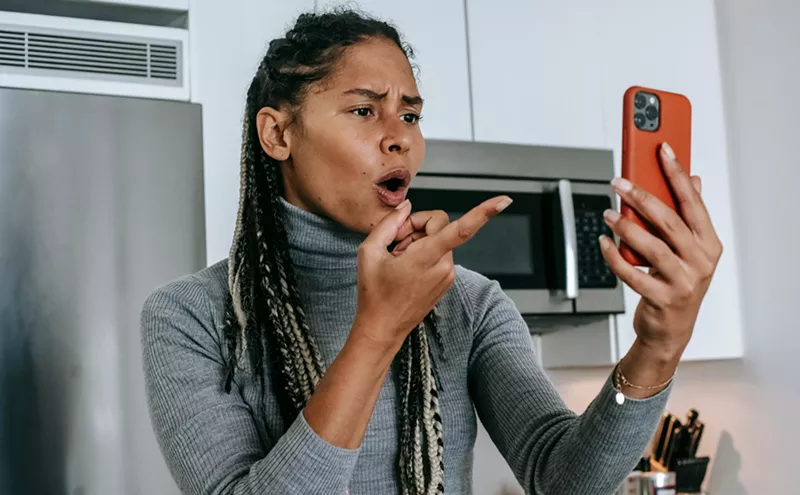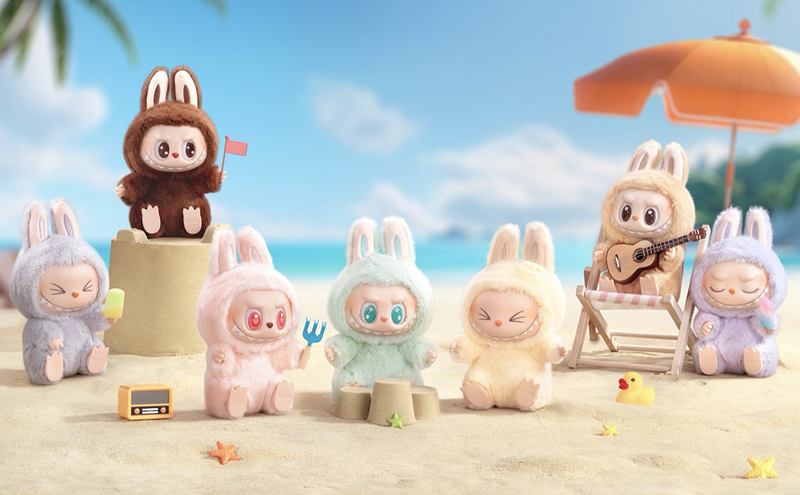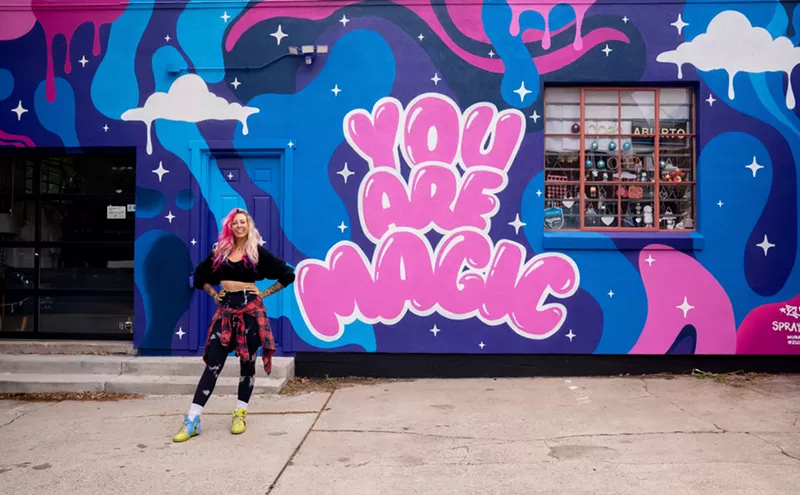That's why the discovery of Bacavi Arts, at 19th and Wazee, is so gratifying. In this former design studio, three Hopi artists from Bacavi Village, Arizona, carve kachinas and show art objects made by friends and relatives from several tribes. Michael "Coin" Calnimptewa, his brother Darin and their partner, Rick James, are all members of the Hopi Kachina Society. Their knowledge of the colorfully costumed character dolls comes from growing up with and participating in Hopi ceremonies and dances.
"We wanted to have a place to work where we could also show our stuff," says Michael. "But part of what I want to do is clear up the confusion about kachinas. They are strictly from the Hopi culture. When somebody acts surprised that I'm asking so much for the kachinas and says they can get the same thing for $28, I know it's not the same thing." At Bacavi Arts, the carvers complete every stage of the kachina themselves, seeming to build a personal relationship with each doll.
Kachinas are nature spirits who, according to legend, have visited the Hopi tribe since time immemorial. There are dozens of clearly defined kachinas whose distinct attributes are part of the Hopi tribal heritage. Simple schematic figures were originally carved by Hopi parents to teach children the various kachina characters, most of whom they would see "come to life" as costumed dancers in holiday ceremonies. Bacavi Arts makes and displays a sizable collection of these historically based, if stiff and unrealistic, kachina depictions.
The stars of this informal gallery, however, depart from that abstract style, incorporating a naturalistic take on native customs. Caught in graceful and dynamic dance postures, the intricately carved and painted cottonwood figurines are hybrids of ancient culture and contemporary figural art. It is the artists' memories of actual dance ceremonies, not the demands of the Southwestern art market, that inspired these creations. The results are palpably different, glowing with authenticity and heart.
Some of these modern-day kachinas are faithful portrayals of the traditional costume characters. Michael's "Butterfly Maiden," for example, is typical of the sensitive and realistic treatment he has mastered. In the real-life dance, Butterfly Maiden dominates the dance floor at nine feet, a fanciful headdress hiding the dancer's real head and adding several feet of height. The kachina-doll version meticulously includes every feather and bead of the costume, as well as the careful stance of a dancer balancing an enormous weight on his shoulders (the headdress can weigh up to fifty pounds). Darin's "Left Hand" shows the kachina figure who "always holds everything in his left hand." A fierce hunter, Left Hand has killed a rabbit, which lies at the figure's feet, pierced by an arrow. Besides his bow, Left Hand is ready with a boomerang, a common hunting weapon among the Hopi. The rabbit's fur, the tribal designs on the boomerang and the arrow's feathers all were carved with great delicacy before painting, endowing the sculpture with individuality and meaning.
Even more distinctive are several of Michael's kachinas that venture further into contemporary style, adding sculptural elements that were never part of the original kachinas. "Wolf" starts with a tiny mask shaped like a wolf's head, then continues down the torso--not with the expected dancer's body, but with a carved depiction of the adobe walls of Hopi architecture. "Mountain Lion" is similar to "Wolf," with the kachina base containing a carved ladder instead of legs.
Such innovations appeal to the Western eye, but they are not calculated to do so. Instead, they are the product of the evolving skills and need for self-expression natural to any artist. In this case, the Hopi artist is producing art to please himself, not a white buyer, and the results are delightful.
Bacavi Arts, 1900 Wazee Street, Suite 1537, 296-7323.












